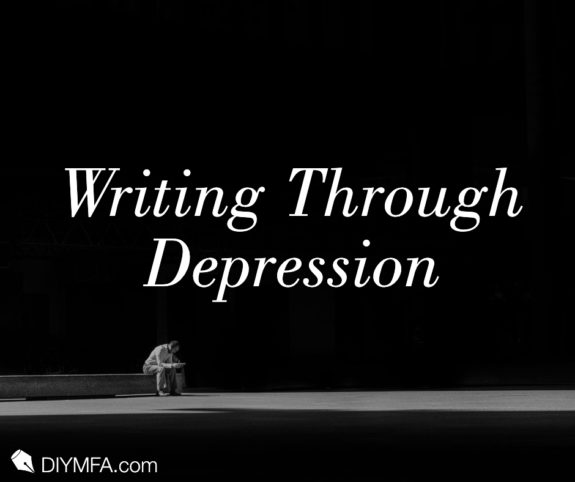Way back in 2009, five major events deeply altered me. In April, my beloved grandmother died. Six weeks later, I married my now-husband. Over the following summer, my husband lost a grandmother on one side and a grandfather on the other. And the following fall, my husband and I bought our first home. While two of those events— marriage and home-buying— were a net positive, all five required going through a grieving process. The loss of three grandparents, our family matriarchs and patriarchs, was incredibly difficult. Neither my husband or I knew how to cope with our sadness, especially during a time when, as newlyweds, we were expected to be happy. But our newlywed status was also more problematic than I’d anticipated. I was glad to have married the love of my life, but changing my last name, letting go of my childhood and becoming half of a couple prompted an unexpected identity crisis. On top of that, buying a house was jointly a milestone and a burden. It was a lot to handle in a short space of time, and these five events combined sent me into a depression.
I emerged from the depression a year later as a writer. This was partly thanks to my therapist, who recommended my taking a writing class. But it was mostly due to what some people would call journaling, and others would call “morning pages.” I’d journaled a lot in high school while I was going through cancer treatment, and it had helped. I’d lost the habit in college, but I picked it up again that summer. Through the practice of daily writing, I was able to figure out how to cope with my grief and ultimately grow past my depression. Since then, depression has come for me a few more times. I’ve learned what I need to do to get through it, and I’d like to share those practices with you today.
I’m going to pause here to acknowledge that some of you reading this post don’t have any experience with depression. “I’m sorry you went through that, Leanne. But this doesn’t really apply to me.” For those of you who’ve never struggled with mental illness, I’m truly happy for you. I’m also going to encourage you to keep reading. You never know when you might go through a blue period yourself, or be invited to give counsel to a loved one dealing with depression. You may even find yourself writing about a depressed character in one of your stories someday. Think of this as research.
For those of you who have experience or are even going through depression currently, please note that while these steps helped me, they are based solely on my own experience and limited research; I am not a mental health professional. If you are truly depressed, I encourage you to seek help.
Step One: Write Every Day
This is one of those pieces of advice that makes some writers nod vigorously and others roll their eyes, but please know that I’m not talking about productive writing here. I’m talking about therapeutic writing. You can call it journaling, or you can call it morning pages, but writing every day helps you process the difficult feelings and negative thought loops that are the hallmarks of depression. It interrupts the cycle and brings you back to a better place. When I’m depressed, I try to write in my journal twice a day: in the morning to psych myself up for the day, and in the evening to put all of my most negative thoughts to rest before I go to sleep.
Step Two: Make a Simple Plan
In my experience, depression often involves creative blockage.You may find yourself staring at your keyboard or blank page. Your hands may feel unwilling or even unable to move. The best way to counteract this blockage is to have a plan for when it occurs. Start by listing all the things you did that day. Maybe one of them will spark a story you want to tell. You can also make a list of objects around you, or a description of a person’s face. Heck, write your grocery list! It doesn’t matter what you write, as long as you get the words flowing. If all else fails, grab the book from your nightstand and start copying down the page you just read. Someone else’s words might help you find your own.
Once the words start to come, you’ll unlock vital pieces of your creativity and personal expression.
Step Three: Share Your Thoughts
Aside from creative blockage, depression also makes us feel isolated, but sharing how you’re feeling is a great step toward climbing out of depression. I’m not saying that you have to tell the whole world that you’re struggling with your mental health. But do share more general thoughts. One thing that shakes me loose is doing a daily blogging challenge. It forces me to stay in a creative zone, keeps me accountable to expressing myself creatively, and gives my brain a much-needed healthy activity.
Step Four: Reflect on Your Writing
At a set time of the day or week, look back on your journaling/morning pages or blog posts. Search for patterns. Try to think of yourself as a character in a story; be as objective as you can. What is this character’s biggest fear? What is she struggling against? How might she seek help? Asking these reflective questions might lead you down a helpful path.
Step Five: Figure Out Where the Story Goes Next
After a few sessions of reflection, decide where your story needs to go next. Signal to your depression that you’re about to put up a fight. Taking action, no matter where it leads, is an empowering way to move forward in the process.
To quote Julia Cameron in The Artist’s Way, “Depression is the unwillingness to acknowledge that we do know where we are headed and what we need. It manifests itself in unhappiness and confusion.”
Though it is incomplete and focused entirely on the creative process, I find Cameron’s definition affirming and empowering. If we look at depression through a creative lens, we can use our writing skills to take our lives back.

Leanne Sowul is an award-winning writer and music teacher. Her writing has appeared in such places as Hippocampus, Rappahannock Review, Confrontation, and Mothers Always Write; her essay “The Band Room” was recently featured at Read 650’s “Gratitude” show at Lincoln Center. As an elementary band director, Leanne can play every woodwind, brass and percussion instrument (just don’t give her a cello!) and has directed over two hundred student performances. Leanne lives with her husband and two children in the Hudson Valley.







